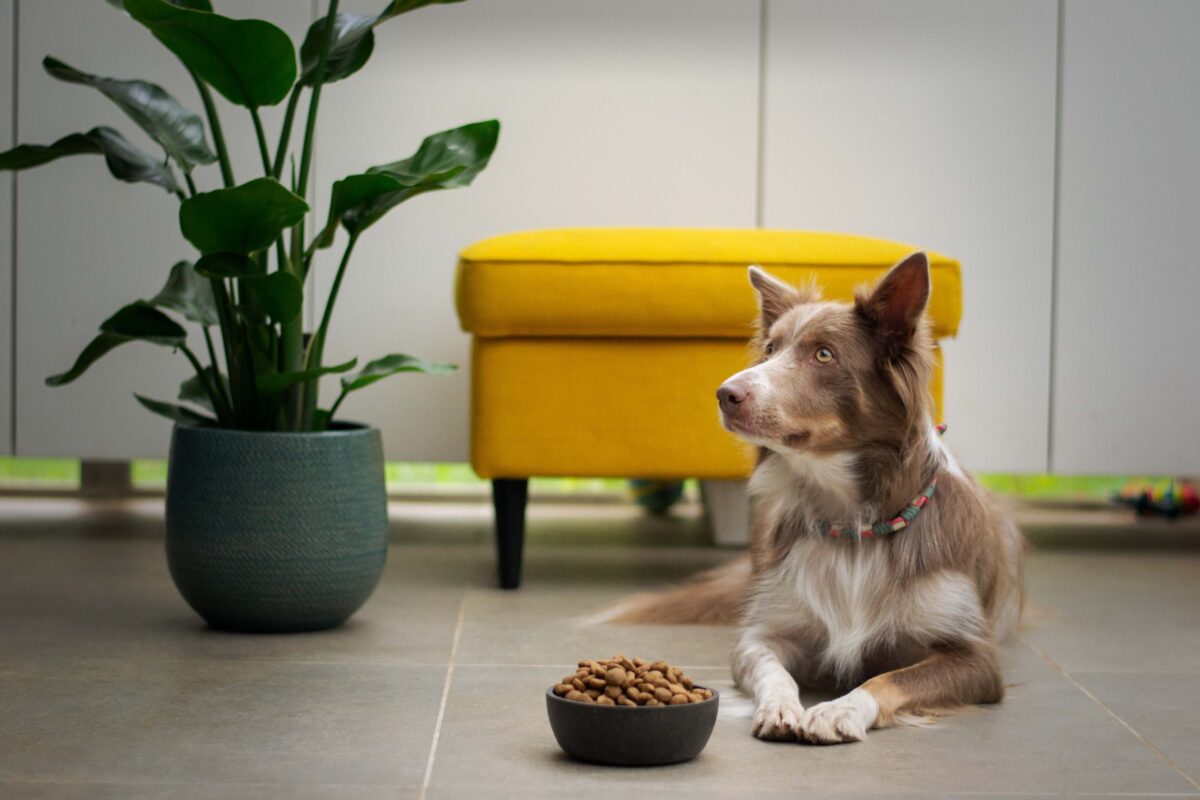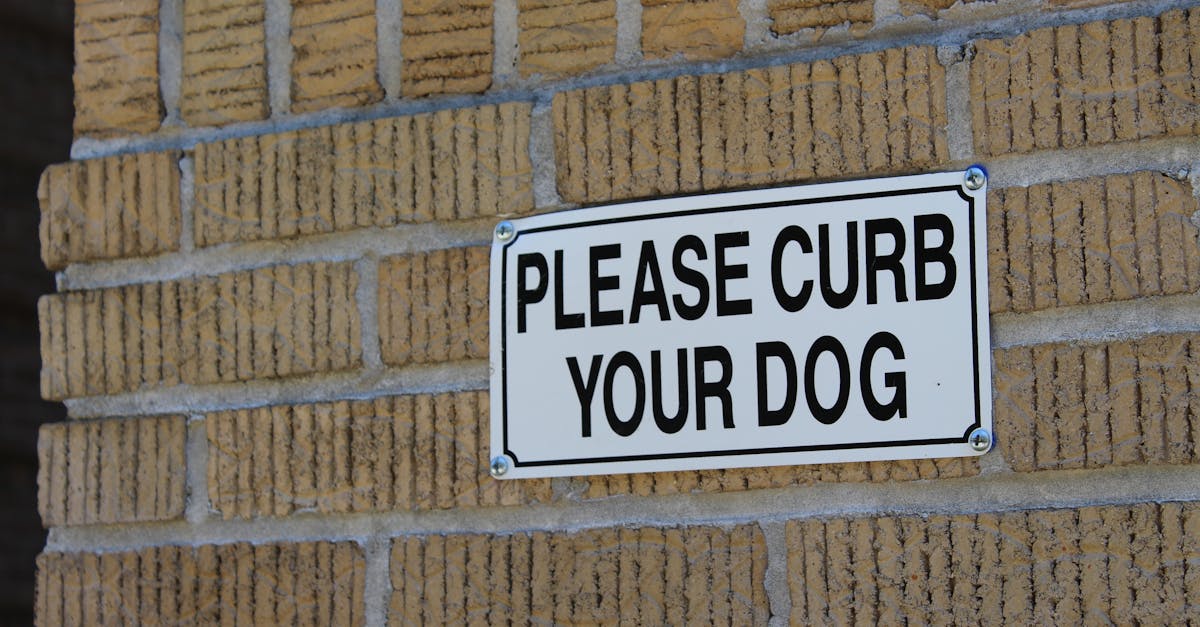Master Proper Dog Etiquette: 2024 Essential Tips for Polite Pups
Discover key tips for proper dog etiquette to enhance community harmony. Learn how responsible ownership, training, and courtesy can foster better relationships.
Are you a dog owner who wants to be a considerate member of your community? We all love our furry friends, but it’s crucial to practice proper dog etiquette to ensure a harmonious coexistence with our neighbors.
As dog parents, we have a responsibility to manage our pets’ behavior and follow certain rules of etiquette. From scooping poop to preventing excessive barking, these guidelines help us navigate social situations with our canine companions. By adhering to these dos and don’ts, we can foster a positive environment for both dogs and humans alike.
In this text, we’ll explore the essential aspects of proper dog etiquette. We’ll cover everything from leash etiquette to greeting strangers, ensuring you and your pup become model citizens in your community. Let’s immerse and discover how we can make every walk and outing a pleasant experience for everyone involved.
Understanding Proper Dog Etiquette
Basic Manners and Training
Proper dog etiquette starts with solid training and basic manners. We emphasize the importance of teaching dogs to handle various social interactions calmly. This includes:
- Practicing greetings with different people
- Training dogs not to bully other canines
- Teaching dogs to remain quiet in public places
Well-trained dogs are better equipped to navigate diverse situations, making outings more enjoyable for everyone involved.
Health and Hygiene
Maintaining your dog’s health and hygiene is crucial for proper etiquette. We recommend:
- Keeping vaccinations up-to-date, including rabies shots
- Protecting against diseases like canine influenza and kennel cough
- Regular grooming and cleaning, especially before public outings
- Using disposable grooming wipes and dental treats for quick touch-ups
These practices ensure your dog is healthy and presentable in public spaces or workplace settings.
Public Interactions
Proper dog etiquette in public spaces is essential for harmonious coexistence. Key points include:
- Always using a leash in public areas, unless in designated off-leash zones
- Asking permission before allowing your dog to greet strangers or other dogs
- Keeping your dog close and under control during walks
- Redirecting your dog’s attention if they bark at people or other animals
By following these guidelines, we create a respectful environment for both dog owners and non-dog owners alike.
Waste Management
One of the most critical aspects of proper dog etiquette is waste management. We stress the importance of:
- Always carrying waste bags during walks
- Picking up after your dog without exception
- Disposing of waste in appropriate receptacles
- Being prepared with extra bags in case you run out
Responsible waste management keeps public areas clean and prevents the spread of harmful bacteria and parasites.
Leash Etiquette
Proper leash etiquette is crucial for maintaining control and ensuring safety. We recommend:
- Using a leash of appropriate length to prevent unwanted contact with passersby
- Avoiding retractable leashes in crowded areas
- Keeping your dog close to you during walks
- Refraining from on-leash play with other dogs, which can lead to tangled leashes and potential conflicts
By following these leash guidelines, we promote safer and more enjoyable experiences for all.
Leash Training and Walking Manners
Proper leash training and walking manners are essential for responsible dog ownership. These skills ensure the safety of your dog, other people, and animals in public spaces. Let’s explore the key aspects of using a leash correctly and handling encounters with other dogs.
Using a Leash Correctly
Leash use is crucial for maintaining control and safety during walks. Always use a leash in public areas, especially where leash laws are enforced. Choose a leash that’s easy to handle in various weather conditions to prevent accidents and maintain control. For urban environments, opt for a shorter leash to keep your dog close and prevent them from wandering into yards or causing disruptions.
When walking your dog, hold the leash firmly but comfortably. Avoid wrapping it around your hand or wrist, as this can lead to injury if your dog suddenly pulls. Instead, loop the leash through your thumb and palm, gripping it with your fingers. This technique allows for quick release if necessary.
Train your dog to walk beside you without pulling. Use positive reinforcement techniques, rewarding them for staying close and maintaining a loose leash. Consistency is key in reinforcing good leash manners.
Handling Encounters with Other Dogs
Encountering other dogs during walks is common, and it’s important to handle these situations properly. Always keep your dog on a short leash when approaching other dogs. This gives you better control and prevents potential conflicts.
Before allowing your dog to greet another, ask the other owner for permission. Some dogs may be in training, fearful, or not comfortable with interactions. Respect their decision if they decline. If both parties agree, allow the dogs to approach each other calmly.
During greetings, watch for signs of aggression or discomfort in both dogs. These may include raised hackles, growling, or stiff body language. If you notice any of these signs, calmly separate the dogs and continue your walk.
For dogs that are reactive or fearful, practice creating distance when you see other dogs. This helps your dog feel more comfortable and prevents negative interactions. Gradually decrease the distance as your dog becomes more confident.
Remember, not all dogs want to socialize. It’s perfectly acceptable to politely decline interactions if you feel it’s in your dog’s best interest. Always prioritize your dog’s comfort and safety during walks.
Cleaning Up After Your Dog
Cleaning up after your dog is a fundamental responsibility of pet ownership. It’s essential for maintaining public health and keeping our communities clean and pleasant for everyone.
Importance of Waste Management
Dog waste management is crucial for several reasons:
- Public Health: Dog feces contain harmful bacteria and parasites that can spread diseases to humans and other animals.
- Environmental Protection: Uncollected waste can contaminate water sources and harm local ecosystems.
- Community Cleanliness: Proper cleanup maintains the aesthetic appeal of public spaces and private properties.
- Legal Compliance: Many areas have laws requiring pet owners to clean up after their dogs.
- Respect for Others: Cleaning up shows consideration for neighbors and fellow community members.
Immediate cleanup prevents the spread of pathogens and keeps public areas safe for everyone. By responsibly managing dog waste, we contribute to a healthier, cleaner environment for all.

Carrying Supplies
To ensure we’re always prepared for cleanup, it’s essential to carry the right supplies:
- Waste Bags: Always bring multiple waste bags on walks. Biodegradable options are environmentally friendly.
- Portable Dispenser: Attach a bag dispenser to your dog’s leash for easy access.
- Hand Sanitizer: Carry a small bottle for hygiene after cleanup.
- Backup Supplies: Keep extra bags in your car or coat pockets for unexpected needs.
- Flashlight: For nighttime walks, a small flashlight helps locate waste in low light.
By consistently carrying these supplies, we ensure we’re always ready to clean up after our dogs, maintaining cleanliness and showing respect for our communities.
Teaching Your Dog Good Behavior
Teaching your dog good behavior is essential for a harmonious relationship with your pet and the community. We’ll explore proper greetings and how to address barking issues to ensure your dog becomes a well-mannered companion.
Proper Greetings with People and Other Dogs
Proper greetings are crucial for your dog’s social interactions. Teach your dog to sit and wait for permission before approaching people or other dogs. Use a leash to maintain control and prevent unwanted interactions. When greeting humans, train your dog not to jump up or nip. For other dogs, discourage signs of aggression or overly dominant behavior. Always ask permission before allowing your dog to greet others, and respect their answer if they decline. Cross the street or create distance if your dog is reactive or nervous around others. By teaching proper greeting etiquette, you’ll ensure positive interactions and maintain a safe, friendly environment for everyone.
Addressing Barking Issues
Excessive barking can be a nuisance to neighbors and a sign of underlying issues. To address barking problems, first identify the cause. Common triggers include boredom, anxiety, or territorial behavior. Provide mental stimulation through toys and regular exercise to combat boredom-related barking. For anxiety-driven barking, desensitize your dog to triggering stimuli gradually. Use positive reinforcement to reward quiet behavior and redirect attention when barking starts. Avoid yelling or punishing, as this may reinforce the behavior. If barking persists, consider professional training or behavior modification techniques. Remember, consistency is key when addressing barking issues. With patience and proper training, you can help your dog become a quieter, more well-behaved companion.
Respecting Others in Public Spaces
Proper dog etiquette in public spaces is crucial for maintaining a harmonious community. It’s our responsibility as dog owners to ensure our furry friends behave appropriately and respect the comfort of others.
Following Dog Park Rules
Dog parks offer excellent opportunities for socialization, but it’s essential to follow the rules for everyone’s safety and enjoyment. Always clean up after your dog, using provided waste bags or bringing your own. Keep a close eye on your pup at all times, intervening if play becomes too rough. Don’t bring food or toys that might cause conflicts. Respect age and size restrictions, and ensure your dog is up-to-date on vaccinations. If your dog shows signs of illness or aggression, it’s best to leave the park. By adhering to these guidelines, we create a positive environment for all park visitors.
Considering Non-Dog Lovers
Not everyone shares our enthusiasm for dogs, and it’s important to respect that. Keep your dog leashed in public areas unless explicitly permitted otherwise. When approaching others, ask if they’re comfortable with dogs before allowing interactions. Be mindful of people with allergies or phobias, giving them space. Train your dog to respond to commands and avoid jumping on strangers. In restaurants or stores that allow dogs, keep them close and well-behaved. By being considerate of non-dog lovers, we promote a more inclusive community and improve the public perception of dog owners.
Home and Neighborhood Etiquette
Proper dog etiquette extends beyond public spaces into our homes and neighborhoods. Creating a harmonious environment for our furry friends and those around us is crucial for responsible dog ownership.
Being a Responsible Dog Owner at Home
Responsible dog ownership at home starts with managing our pets’ behavior, especially when guests arrive. We keep our dogs contained until all guests have entered to avoid tripping hazards or disruptions. If our dogs greet guests with excited jumps and licking, we calmly move them away and apologize. Yelling is avoided as it can exacerbate excitement.
To maintain a comfortable environment, we provide plenty of stimulation for our dogs, such as new chew bones or treat-dispensing toys, to keep them occupied during gatherings. During mealtime, we separate our dogs from the group to prevent begging and ensure a pleasant atmosphere for our guests. These practices demonstrate consideration for both our pets and visitors, fostering positive interactions in our home.
Maintaining Good Relationships with Neighbors
Building good relationships with neighbors is essential for responsible dog ownership. We start by introducing our dogs to neighbors, allowing them to become familiar with the pets in the area. Regular grooming and hygiene maintenance prevent unpleasant odors that might bother neighbors.
We’re mindful of noise levels, addressing excessive barking promptly to avoid disturbing the peace. When in shared spaces like apartment hallways or elevators, we keep our dogs leashed and under control. We always clean up after our pets, whether in our yard or common areas, to maintain a clean and pleasant environment for everyone.
Communication is key. We inform neighbors about any potential issues, such as a nervous dog that might bark at unfamiliar sounds. By being proactive and considerate, we create a positive atmosphere that benefits both our dogs and our community.
When to Leave Your Dog at Home
While we love spending time with our furry friends, there are situations where it’s best to leave our dogs at home. Proper dog etiquette involves recognizing these scenarios to ensure the comfort and safety of our pets and others. Here are key instances when it’s appropriate to leave your dog behind:
At Social Gatherings and Parties
Social events can be overwhelming for dogs, especially those that are easily excitable or prone to jumping on people. To maintain proper dog etiquette:
- Keep your dog at home if they’re not well-socialized or tend to get overexcited
- Consider your dog’s temperament and the nature of the event
- If you must bring your dog, supervise them closely and be prepared to remove them if they become disruptive
In Public Places with Exact Restrictions
Many public spaces have rules about dogs. To practice good dog etiquette:
- Always check for signs or regulations before bringing your dog to parks, trails, or stores
- Respect “No Dogs Allowed” signs and policies
- Research local laws and ordinances about dogs in public spaces
When Encountering Other Dogs or People Without Permission
Unexpected encounters can lead to stressful situations. To ensure proper dog etiquette:
- Keep your dog at home if you’re unsure of their reaction to other dogs or people
- Always ask for permission before allowing your dog to approach others
- If you must bring your dog, keep them under strict control in public areas
Visiting a Loved One’s Home
When visiting friends or family, it’s crucial to follow proper dog etiquette:
- Never bring your dog uninvited or unannounced
- Wait for an explicit invitation rather than asking if you can bring your dog
- If your dog is invited, ensure they’re well-behaved and respect the host’s home
By following these guidelines, we demonstrate responsible dog ownership and contribute to a harmonious community. Remember, proper dog etiquette isn’t just about our pets’ behavior—it’s about our consideration for others and our ability to make informed decisions about when and where to bring our canine companions.
Professional Training for Better Etiquette
Professional dog training plays a crucial role in developing proper dog etiquette. We’ll explore how expert guidance can significantly improve a dog’s behavior and social skills, making them more manageable and enjoyable companions.
Benefits of Professional Training
Professional training offers many advantages for both dogs and their owners:
- Personalized approach customized to your dog’s exact needs
- Consistent and structured learning environment
- Expert knowledge of canine behavior and psychology
- Faster and more effective results compared to self-training
- Addresses complex behavioral issues beyond basic commands
Choosing the Right Trainer
Selecting an experienced and qualified dog trainer is essential for successful etiquette training:
- Look for certifications from reputable organizations
- Check reviews and testimonials from previous clients
- Observe their training methods to ensure they align with positive reinforcement techniques
- Discuss your goals and expectations before committing to a program
- Ensure the trainer has experience with your dog’s breed and exact behavioral issues
Common Etiquette Skills Taught
Professional trainers focus on a wide range of etiquette skills to improve your dog’s behavior:
- Leash manners and controlled walking
- Proper greetings with people and other dogs
- Impulse control and staying calm in various situations
- Recall and coming when called, even with distractions
- Leaving items alone on command (useful for avoiding litter or dropped food)
Group Classes vs. Private Sessions
Both group classes and private training sessions offer unique benefits for etiquette training:
Group Classes:
- Provide socialization opportunities with other dogs and people
- Often more affordable than private sessions
- Teach dogs to focus even though distractions
Private Sessions:
- Offer personalized attention and customized training plans
- Address exact behavioral issues more effectively
- Provide flexibility in scheduling and location
Reinforcing Training at Home
Consistency is key in maintaining good etiquette. We recommend:
- Practicing learned skills daily in various environments
- Using the same commands and hand signals taught by the trainer
- Rewarding good behavior consistently
- Involving all family members in the training process
- Gradually increasing distractions to strengthen learned behaviors
Addressing Exact Etiquette Challenges
Professional trainers can help with common etiquette issues:
- Excessive barking or whining
- Jumping on people or furniture
- Pulling on the leash during walks
- Resource guarding or food aggression
- Reactivity towards other dogs or people
Ongoing Support and Follow-up
Many professional trainers offer continued support after initial training:
- Follow-up sessions to address new challenges
- Refresher courses to reinforce learned behaviors
- Phone or email consultations for quick advice
- Advanced training options for further skill development
By investing in professional training, we can significantly improve our dogs’ etiquette, leading to more harmonious interactions in public spaces and a stronger bond between dogs and their owners. Remember, good etiquette isn’t just about obedience; it’s about creating well-adjusted, confident dogs that can navigate various social situations with ease.
Conclusion
Proper dog etiquette is essential for creating a harmonious community where both dog owners and non-dog owners can coexist peacefully. By following these guidelines we’ve discussed we can ensure our furry friends are well-behaved responsible members of society.
Remember it’s our duty as dog owners to train our pets respect others and maintain cleanliness in public spaces. With consistent effort and patience we can foster positive relationships with our neighbors and create a more inclusive environment for everyone.
Let’s continue to be mindful considerate dog owners and set a positive example in our communities. Together we can make the industry a better place for dogs and humans alike.

